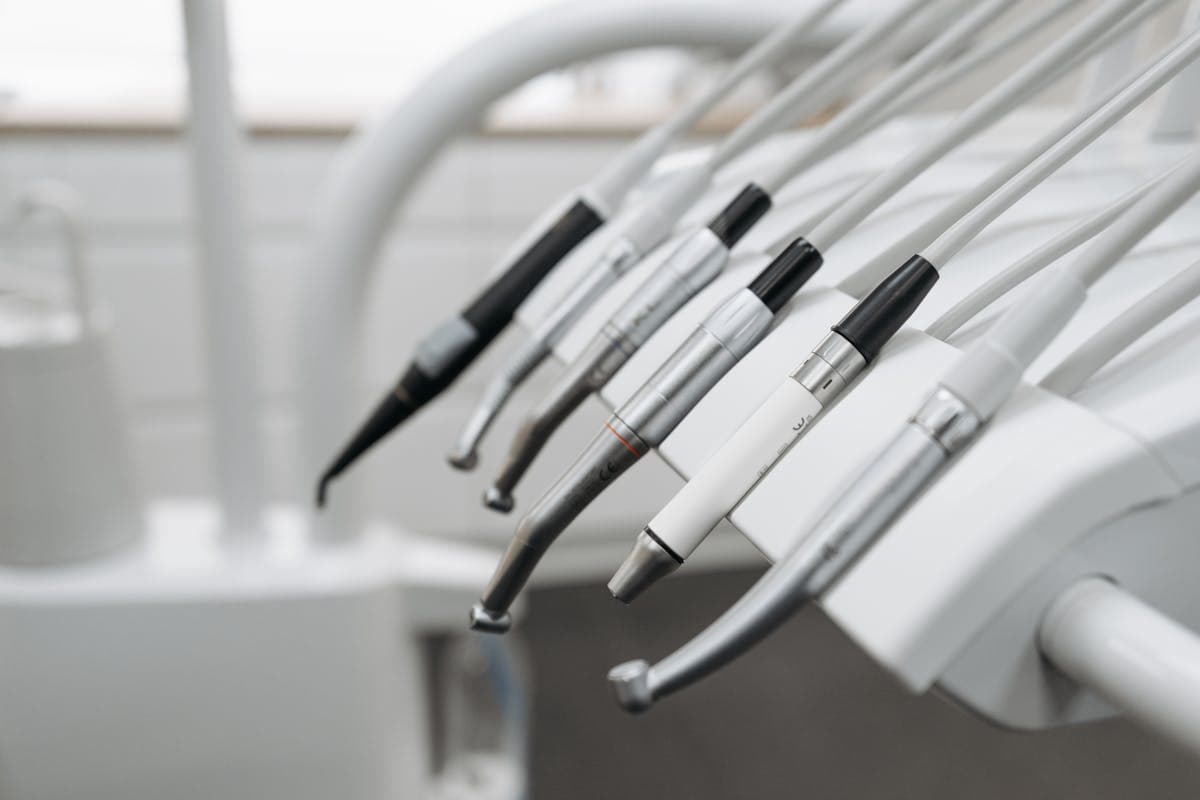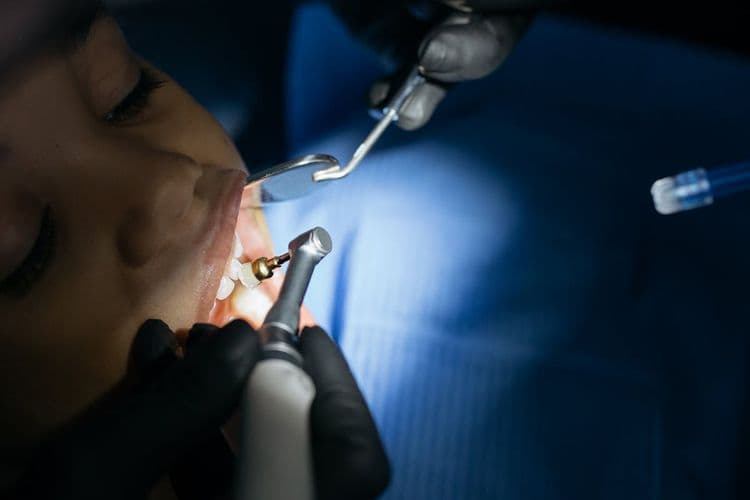The removal of braces cement, a key step in the conclusion of orthodontic treatment, necessitates a meticulous procedure that involves the safe extraction of adhesives and brackets without causing harm to the tooth enamel. This process, typically performed by a trained professional using specific tools like scalers and dental drills, is integral to ensuring a thorough and safe removal. Attempting to undertake this procedure without professional guidance could lead to several complications, including enamel damage and increased sensitivity. Hence, it is paramount to understand the importance of professional intervention in maintaining overall dental health post-treatment.
Understanding Braces Cement
Braces cement, otherwise known as orthodontic adhesive, plays an instrumental role in dental correction procedures. This material is crucial in securely bonding the braces to the teeth, ensuring their stability throughout the treatment period. The braces composition involves several components, one of which is the cement that acts as a bonding agent between the brace and tooth enamel.
The cement bonding process is a critical part of orthodontic treatment. A strong bond is essential to withstand the forces applied during teeth adjustment, ensuring the braces remain in place for the desired time. However, the cement must also allow for safe and efficient removal at the end of the treatment, without damaging the tooth structure. Fundamentally, understanding braces cement is integral to appreciating the complexities of orthodontic treatments.
First Steps in Cement Removal
Initiating the process of cement removal signifies the culmination of an orthodontic journey. The first step involves understanding the cement types used in orthodontics, as different types may require distinct removal techniques. The most commonly used types include glass ionomer, resin-modified glass ionomer, and composite resin cements.
The cement removal process is initiated by loosening the brackets and wires from the teeth. This is done using special orthodontic pliers, which are designed to apply a specific amount of pressure to the brackets without damaging the underlying tooth structure. The next step involves gently scraping off the cement residue from the tooth surface, taking care not to harm the enamel. While these are the initial steps, the complete removal of all cement requires professional intervention.
Professional Removal Techniques
In the professional field of orthodontics, there are specific techniques employed for the removal of braces cement. The primary methods include dental scaling and polishing, followed by the orthodontic debonding process. Additionally, aftercare post-cement removal is vital to guarantee the health and integrity of the teeth and gums.
Dental Scaling and Polishing
Scaling and polishing, two professional techniques primarily used for the removal of braces cement, stand as essential steps in maintaining oral hygiene post orthodontic treatment. These methods not only guarantee the elimination of residual cement but also prevent any potential oral health issues that could arise from its existence. Dental scaling involves the use of specialized instruments to remove plaque and tartar, particularly from the root surfaces. This process aids in the preservation of dental hygiene and the prevention of gum diseases. Following scaling, teeth are then polished to smooth out any rough surfaces, enhancing both the aesthetic appearance and the health of the teeth. This two-fold approach is pivotal in safeguarding the longevity of a patient’s oral health post orthodontic treatment.
Orthodontic Debonding Process
Removing the bonded orthodontic appliances, a process known as orthodontic debonding, requires a careful and meticulous approach to preserve tooth enamel and oral health. This is performed under professional supervision, guaranteeing safety and precision. The process involves gently removing the braces bonding by employing specialized instruments, thereby reducing the likelihood of damaging the surrounding structures. The orthodontic appliances are removed sequentially, starting from the molar bands and proceeding to the brackets. The adhesive remnants are then carefully scraped off the tooth surfaces. Furthermore, the process is carried out while assuring patient comfort. Essentially, the orthodontic debonding process is a critical stage in braces treatment, requiring significant professional expertise to guarantee a successful outcome.
Aftercare Post-Cement Removal
Following the meticulous orthodontic debonding process, the next significant step is the aftercare post-cement removal. This phase involves careful pain management and dietary adjustments to guarantee an ideal healing environment for the oral tissues. As the mouth can be sensitive after the cement removal, over-the-counter analgesics are often recommended to control discomfort. Additionally, a soft diet is advised to prevent undue pressure on the teeth and gums. Foods that require minimal chewing, such as soups, smoothies, and mashed vegetables, are perfect during this period. It is also vital to maintain good oral hygiene to prevent plaque buildup and potential infections. The proper aftercare following cement removal plays a key role in the overall success of orthodontic treatment.
Tools Used by Orthodontists
Orthodontic procedures, such as braces cement removal, necessitate the use of specialized tools. Orthodontists employ a range of instruments, each with a specific purpose. The most commonly used orthodontic tools during cement application include cement spatulas, mixing bowls, and bonding applicators. These tools guarantee precise and accurate application of the cement onto the brackets.
For cement removal, orthodontists utilize tools like a scaler or a dental drill. The scaler is used to chip away the cement carefully without damaging the teeth, while the dental drill is used to gently buff away any remaining cement residue. The use of these specialized orthodontic tools is essential to guarantee the safety and comfort of patients during the braces cement removal process.

Potential Challenges in Cement Removal
While the removal of braces cement is a routine procedure in orthodontics, it can present several potential challenges.
- Inadequate removal techniques: Not all methods are equally effective, and improper techniques can leave cement residue.
- Damage to enamel: The bonding material is strong, and careless removal can harm the tooth enamel.
- Patient discomfort: The removal process can cause discomfort, especially if cement residue is left behind.
- Time-consuming: Depending on the amount and location of the cement, the removal process can be lengthy.
These challenges emphasize the need for professional expertise in the removal of braces cement. Orthodontists must be meticulous in their approach to minimize risks and guarantee the patient’s oral health is not compromised.
Home Remedies for Residual Cement
Although the removal of braces cement should ideally be conducted by a professional, there may be instances where minimal residual cement is left behind. In such scenarios, home remedies can prove to be beneficial. Homemade solutions like baking soda and water paste can be used. This natural alternative works as a gentle abrasive, helping to scrub off the cement without damaging the enamel. Another solution is the use of a toothbrush with firm bristles or a dental pick. However, caution must be exercised to avoid harming the gums. Vinegar, known for its acidic properties, can also be used, but its application should be followed by a thorough rinse to prevent potential damage. Always remember to consult with a dental professional before trying these remedies.
Risks of DIY Cement Removal
While home remedies for residual cement may seem attractive, it is essential to evaluate the risks associated with DIY cement removal. Potential dental damage, health implications, and costly consequences are some of the serious repercussions that may arise. In the following, we will explore these risks in detail to highlight the importance of professional intervention in the process of braces cement removal.
Potential Dental Damage
Tempting as it may be to tackle the task of braces cement removal at home, the potential for dental damage is alarmingly high. Doing so can lead to serious complications including tooth sensitivity and enamel erosion.
The potential damages are:
- Increased tooth sensitivity: incorrect removal techniques can expose the inner layers of teeth, leading to heightened sensitivity.
- Enamel erosion: the protective outer layer of teeth, the enamel, can be irreversibly damaged.
- Gum damage: gums can easily be wounded by sharp objects used in an attempt to scrape off cement.
- Tooth fracture: excessive force can lead to cracks or even fractures in teeth.
Hence, it is advisable to let professionals handle braces cement removal to protect your dental health.
Health Implications
Moving beyond potential dental damage, one must also consider the broader health implications associated with DIY braces cement removal. Cement residues left on tooth surfaces can disrupt oral health, leading to issues such as cavities or tooth decay. The cement removal process requires precision, and if performed without professional supervision, it could result in accidental ingestion or inhalation of cement particles. This can lead to gastrointestinal or respiratory problems. Furthermore, the improper use of tools during the process might cause harm to the soft tissues of the mouth, escalating the risk of infection. As a result, maintaining dental hygiene and ensuring professional intervention is crucial to avoid the unforeseen health risks that DIY cement removal might pose.
Costly Consequences
Diving headfirst into the domain of DIY braces cement removal can often lead to costly consequences. The allure of saving money by avoiding dental professionals can be tempting, but the cost implications of poor removal techniques can far outweigh those initial savings.
- Damage to tooth enamel, potentially leading to more expensive restorative dental work.
- Risk of infection if improper tools are used, which could result in costly medical bills.
- The possibility of lingering cement causing long term effects like gum diseases.
- Costly orthodontic treatment may be needed if teeth shift due to improper cement removal.
Maintaining Oral Hygiene Post-Removal
Upon the removal of your braces, it is essential to pay special attention to your oral hygiene to guarantee the health and beauty of your newly straightened teeth. The following oral hygiene tips are useful for post removal care. Firstly, regular brushing and flossing are critical to remove plaque and food particles that can cause cavities and gum diseases. Also, using a mouthwash can kill bacteria and freshen your breath. It’s worth investing in a high-quality toothbrush and dental floss to guarantee a thorough cleaning. Regular dental check-ups are also important. Your dentist can provide professional cleaning and address any potential issues early. Remember, maintaining good oral hygiene post-removal guarantees the longevity of your orthodontic results.
Frequently Asked Questions
Does Insurance Cover Braces Cement Removal?
Insurance policies vary considerably; however, coverage for specific dental procedures like cement removal is typically included. It’s crucial to verify with your insurance provider as coverage limits and out-of-pocket costs may apply.
What Is the Average Cost of Professional Braces Cement Removal?
The average cost of professional braces removal, which includes the elimination of adhesive residues, varies widely but generally ranges between $75 to $200. Dental costs greatly depend on the dentist’s experience, location, and specific patient needs.
Can Braces Cement Removal Cause Tooth Sensitivity?
Yes, tooth sensitivity can occur post-procedure due to the potential exposure of dentin. However, with proper dental care, any discomfort should be temporary and subside as the teeth adjust to their environment post-treatment.
Are There Any Alternatives to Braces Cement?
Yes, there are alternatives to traditional braces cement. One common option is ceramic brackets, which are often used with adhesive alternatives that can be less damaging and easier to remove than traditional cement.
How Often Should I Visit the Orthodontist After Cement Removal?
Post removal care is essential to maintain oral health. Typically, orthodontic follow-ups should occur every 6 weeks, but this can vary based on individual needs and the discretion of your orthodontist.


